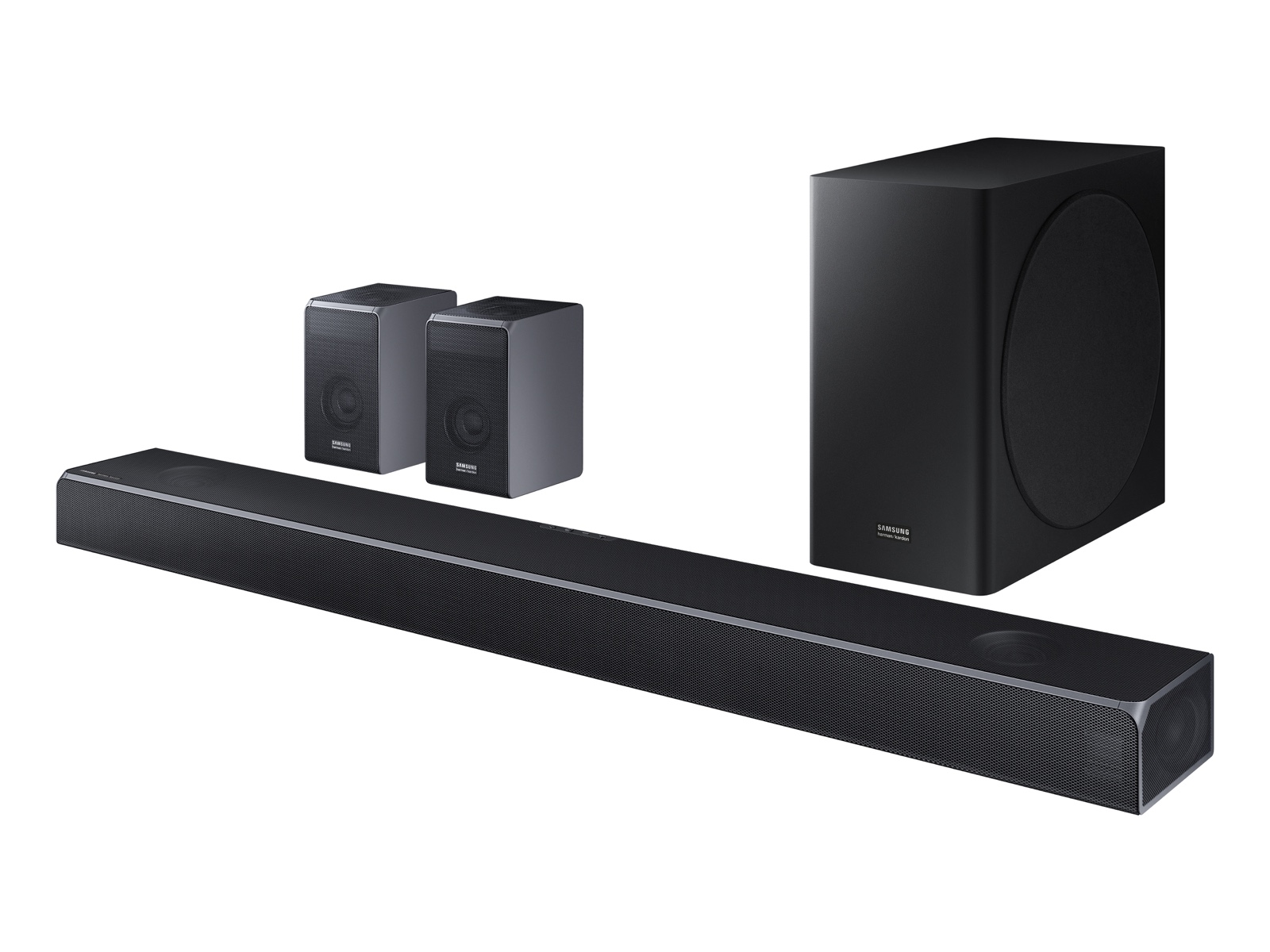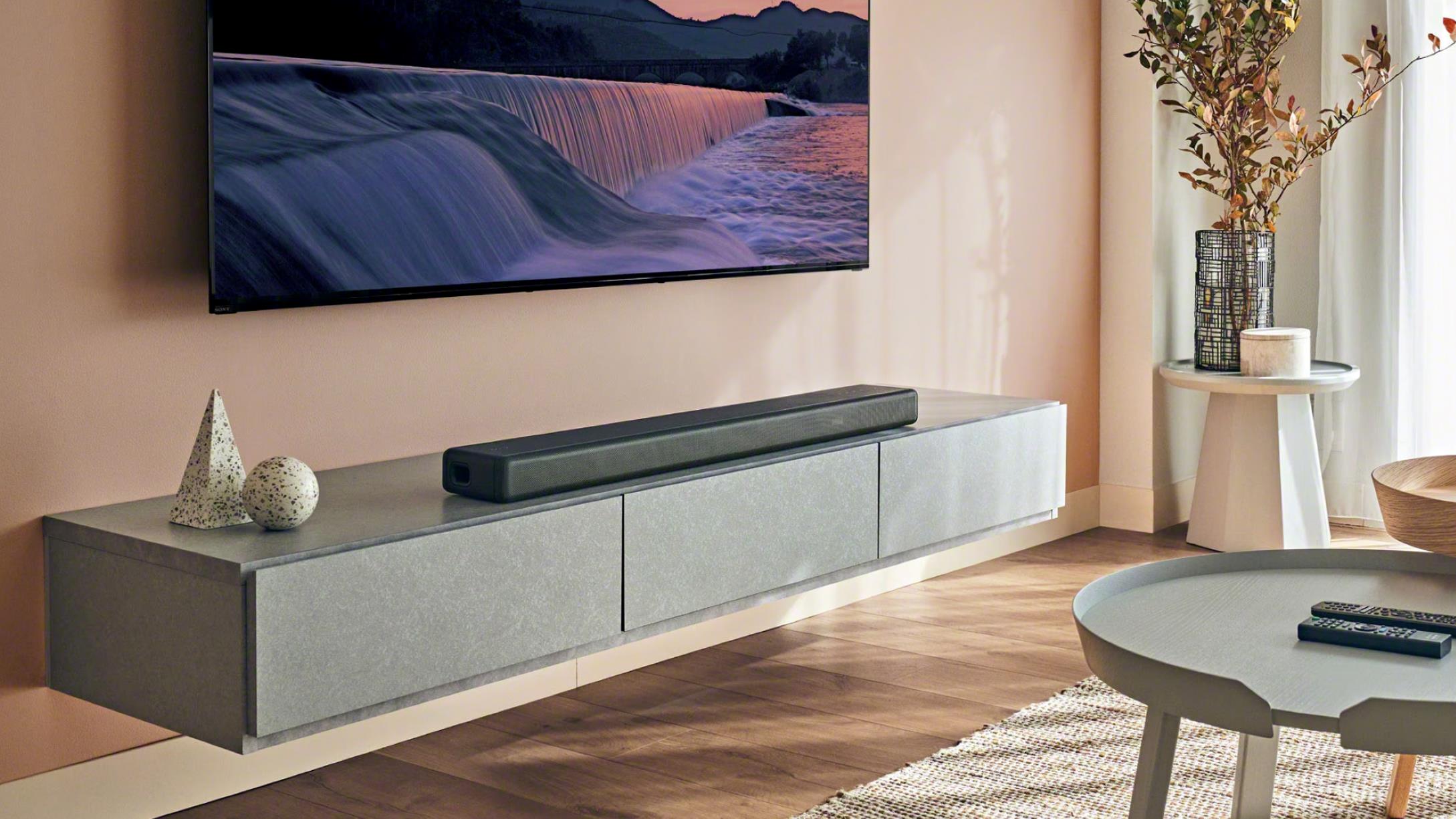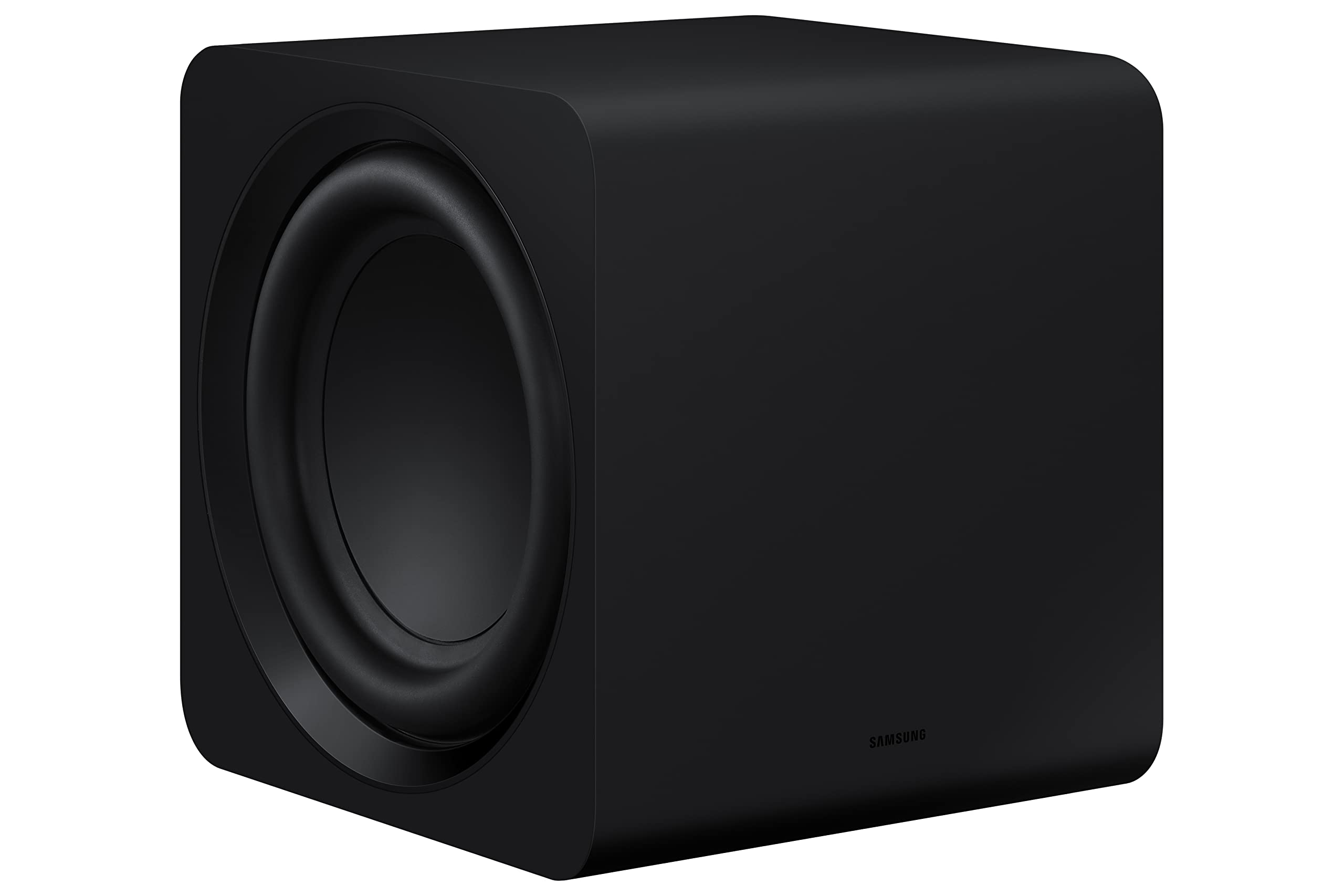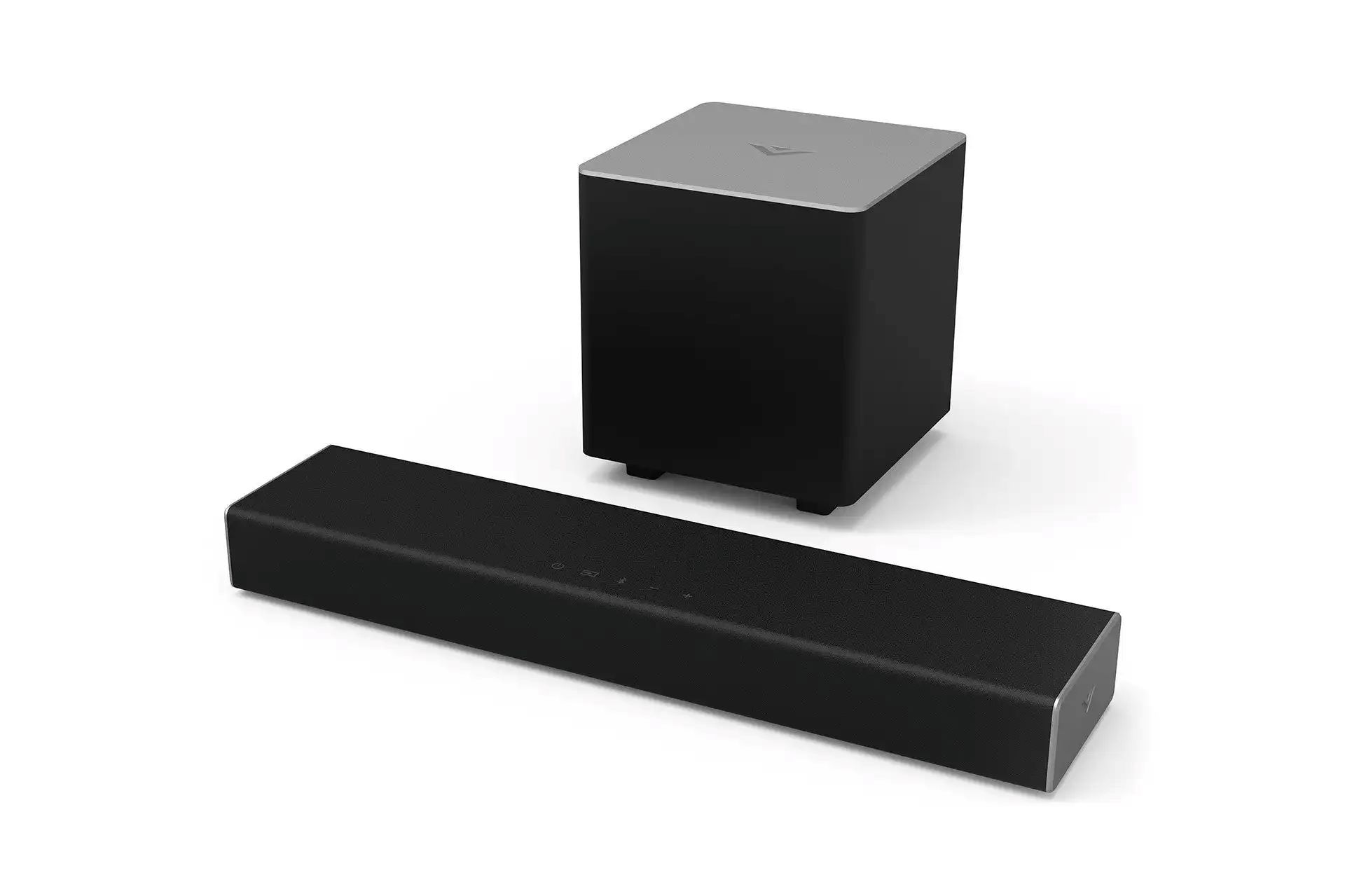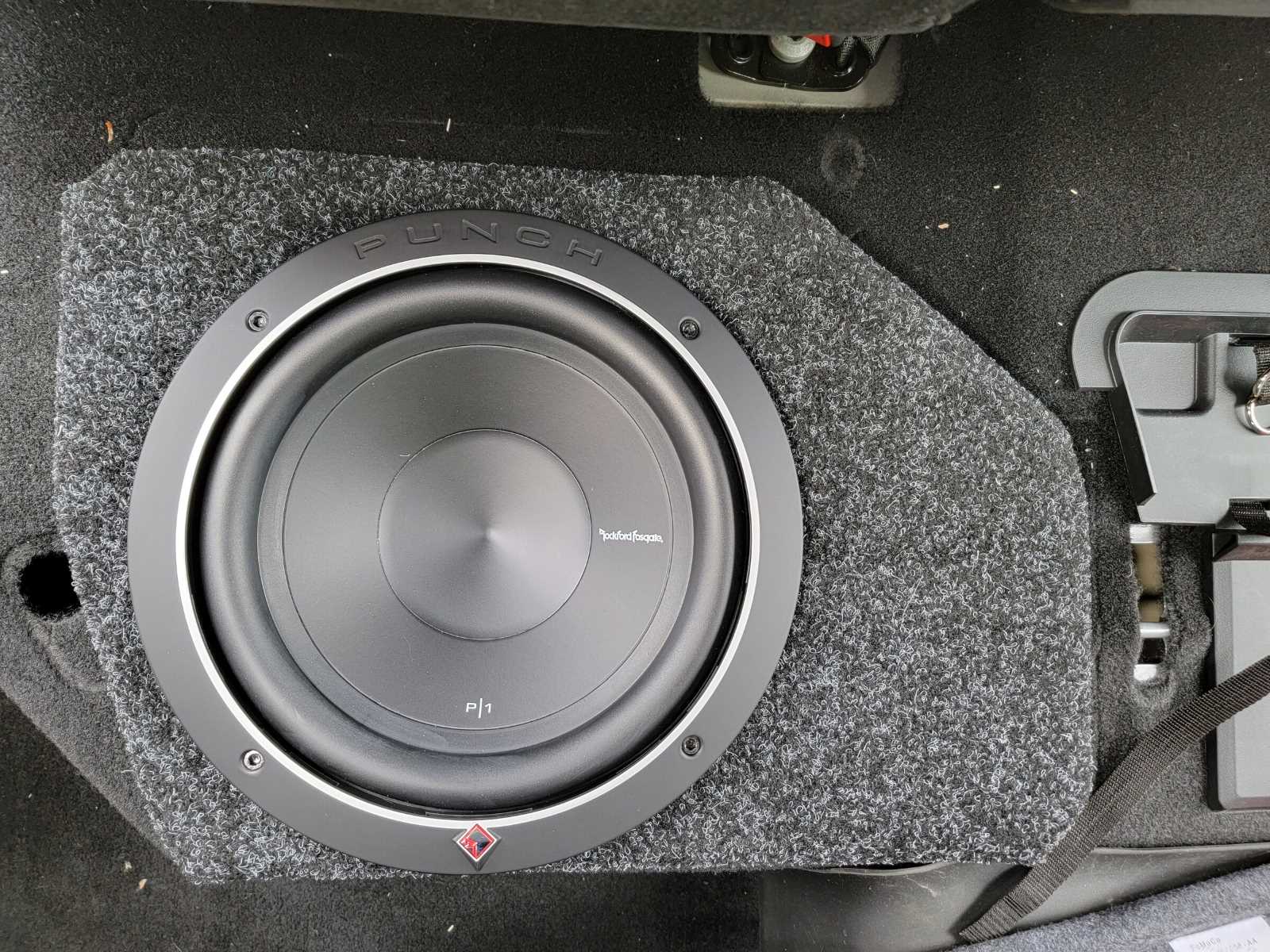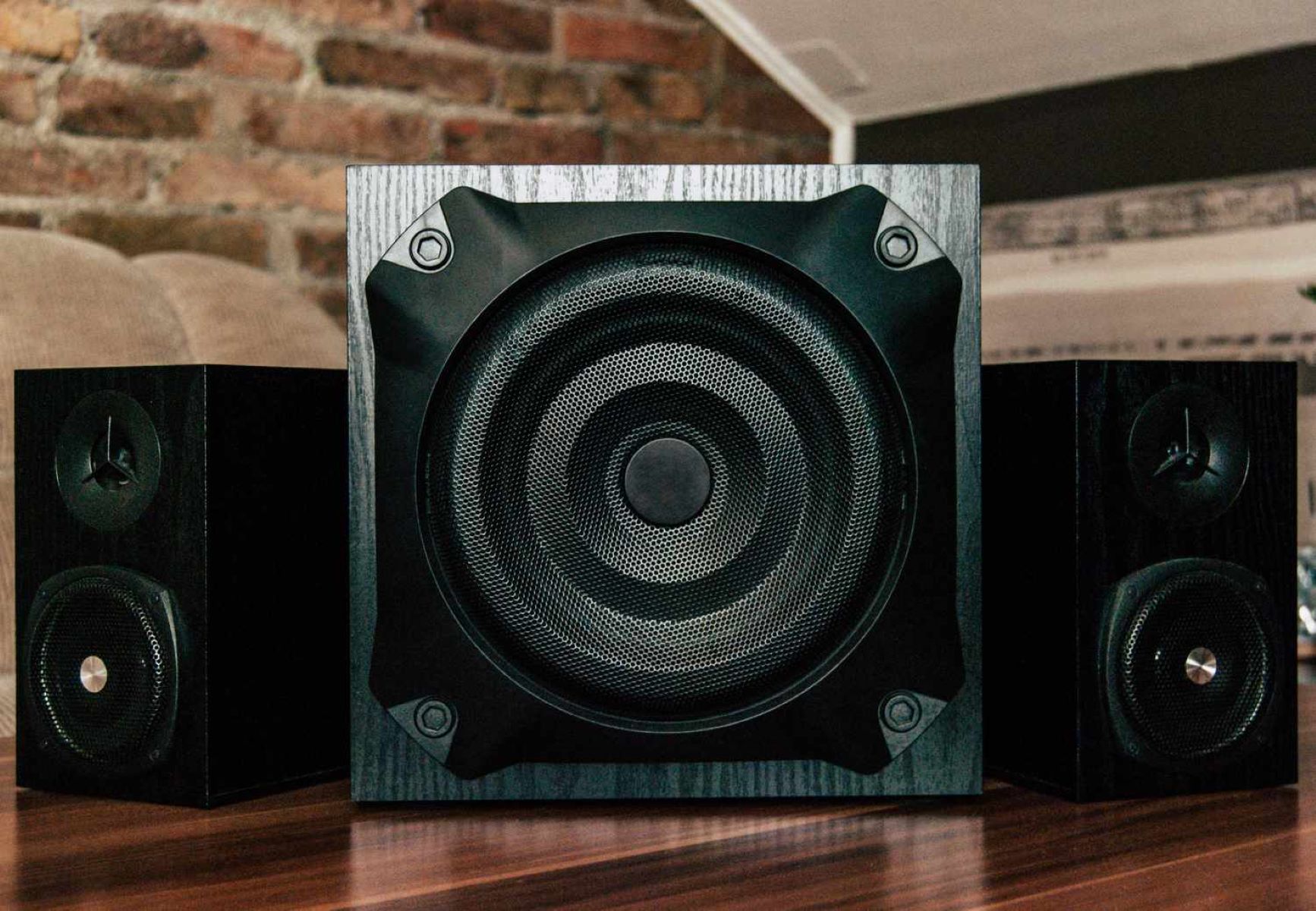Home>Devices & Equipment>Subwoofer>How To Make My Subwoofer Hit Harder
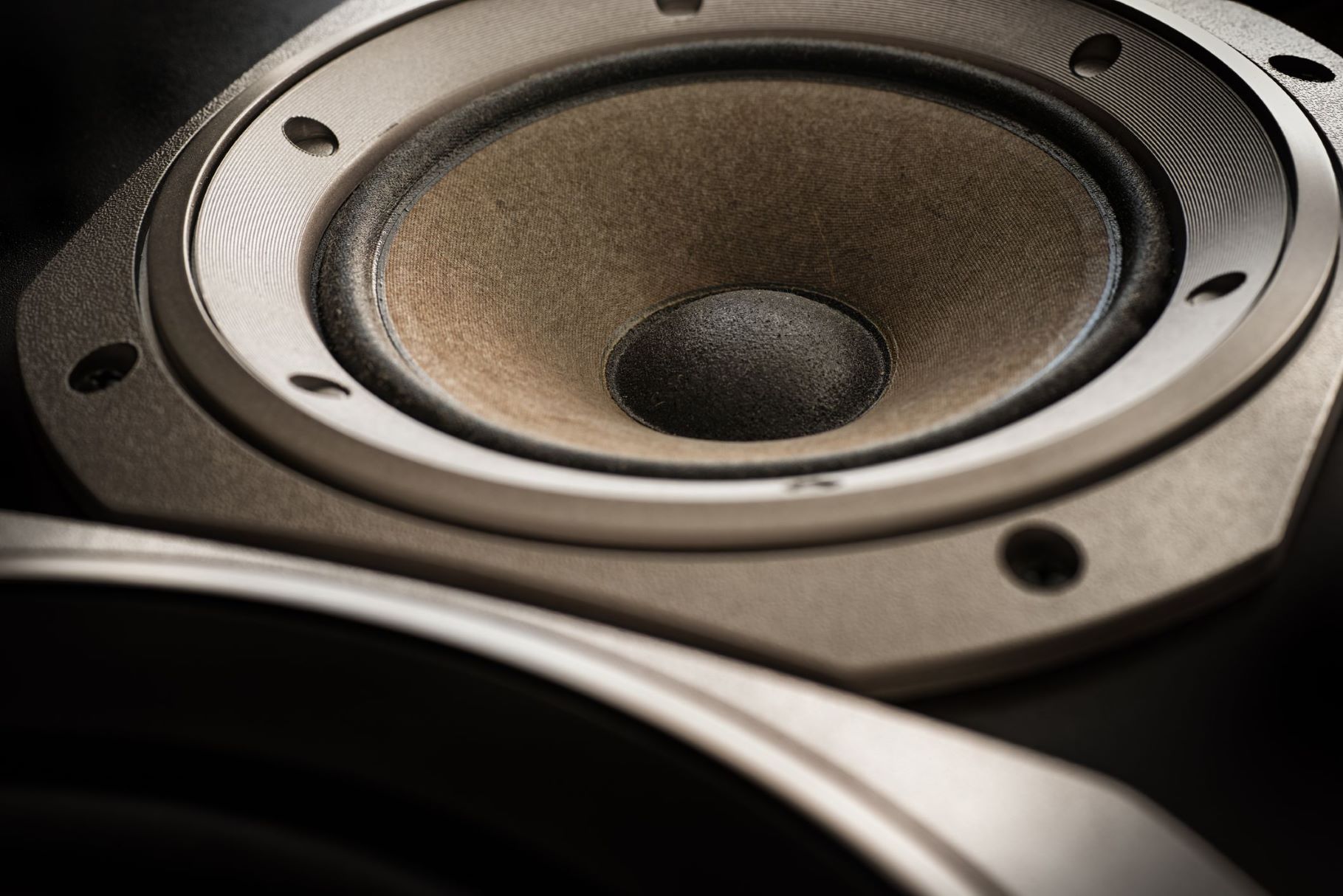

Subwoofer
How To Make My Subwoofer Hit Harder
Modified: February 18, 2024
Learn how to make your subwoofer hit harder with our step-by-step guide. Enhance your audio experience and enjoy booming bass like never before.
(Many of the links in this article redirect to a specific reviewed product. Your purchase of these products through affiliate links helps to generate commission for AudioLover.com, at no extra cost. Learn more)
Table of Contents
Introduction
Welcome to the world of deep, rich bass and earth-shaking sound: subwoofers. If you’re a music enthusiast or an avid movie watcher, you know that a powerful and well-tuned subwoofer can take your listening experience to a whole new level. But how can you make your subwoofer hit harder? In this article, we will explore various techniques and tips to optimize your subwoofer’s performance and get that bone-rattling bass you desire.
Before we dive into the specifics, it’s important to understand the role of a subwoofer. Unlike regular speakers that reproduce midrange and high frequencies, a subwoofer is dedicated to producing low-frequency sounds, typically between 20 Hz and 200 Hz. These low-frequency sounds, often referred to as bass, add depth and impact to audio playback, whether it’s music, movies, or even video games.
While most subwoofers are designed to deliver impressive low-end frequencies out of the box, there are several factors that can affect their performance. These factors include the type and quality of the subwoofer, its placement and acoustics, the settings on your audio source, and even the quality of your wiring. By optimizing these elements, you can take your subwoofer’s performance to the next level and truly make it hit harder.
Throughout this article, we will guide you through each step of the process, providing you with practical tips and insights to maximize the potential of your subwoofer. Whether you’re a seasoned audiophile or a beginner looking to enhance your audio setup, let’s dive in and discover how to make your subwoofer hit harder than ever before.
Choosing the Right Subwoofer
When it comes to making your subwoofer hit harder, the first step is selecting the right subwoofer for your needs. There are a few key factors to consider when making this decision.
One important factor to consider is the size of the subwoofer. Subwoofers come in various sizes, typically measured in inches. As a general rule, larger subwoofers tend to produce deeper, more powerful bass. However, the size of the subwoofer should also be compatible with your listening space. If you have a small room, a compact subwoofer might be a better fit. Conversely, if you have a large room or want to achieve a truly immersive audio experience, a larger subwoofer may be the ideal choice.
Another factor to consider is the type of subwoofer. There are two main types: powered subwoofers and passive subwoofers. Powered subwoofers have a built-in amplifier and are typically more convenient to set up and adjust. On the other hand, passive subwoofers require an external amplifier to power them. The choice between these two types depends on your specific requirements and preferences.
Additionally, pay attention to the power rating and frequency response of the subwoofer. The power rating indicates how much power the subwoofer can handle, while the frequency response refers to the range of frequencies it can reproduce. Look for a subwoofer with a higher power rating for greater impact, and a wider frequency response for a more accurate bass reproduction.
Lastly, consider the overall quality and reputation of the subwoofer brand. Look for reputable brands that are known for producing high-quality audio equipment. Reading reviews and seeking recommendations from audio enthusiasts or professionals can help you make an informed decision.
Ultimately, choosing the right subwoofer involves finding a balance between your specific needs, the size of your listening space, and the quality of the subwoofer itself. By selecting a subwoofer that aligns with your requirements, you’re setting the foundation for a hard-hitting bass experience.
Placement and Acoustics
Once you have chosen the right subwoofer, the next step to make it hit harder is proper placement and optimizing the acoustics of your listening space. Where you position your subwoofer in the room can greatly affect its performance and the overall listening experience.
When it comes to subwoofer placement, there are a few general guidelines to keep in mind. Ideally, you want to place your subwoofer near the front of the room, as this can help blend the low-frequency sounds with the rest of the audio coming from your main speakers. However, avoid placing it too close to walls or corners, as this can result in boomy or overpowering bass.
Experiment with different subwoofer positions and listen for any noticeable changes in bass response. Sometimes a simple adjustment of a few inches can make a significant difference. Additionally, consider using isolation pads or stands to decouple the subwoofer from the floor or other surfaces, as this can help minimize vibrations and improve overall clarity.
In addition to placement, optimizing the acoustics of your room can further enhance the impact of your subwoofer. Acoustic treatment can help reduce unwanted reflections and resonances that can negatively affect bass performance. This can be achieved using bass traps, which are specifically designed to absorb low-frequency sound waves.
Another aspect to consider is the placement of furniture and other objects in the room. Large furniture items can act as barriers and disrupt the sound waves, affecting the bass response. Avoid placing obstacles between the subwoofer and your listening position, and make sure to clear any clutter that may interfere with the sound dispersion.
To further optimize the acoustics of your listening space, you can use room correction software or a dedicated equalizer. These tools can help fine-tune the frequency response of your subwoofer in relation to the room’s acoustic characteristics, ensuring a smoother and more accurate bass reproduction.
By paying attention to subwoofer placement and optimizing the acoustics of your room, you can create an optimal listening environment that allows your subwoofer to truly hit harder. Experimentation and careful adjustment are key to finding the perfect configuration for your unique space and audio setup.
Adjusting the Subwoofer Settings
Now that you have your subwoofer positioned and the room optimized, the next step is to fine-tune the subwoofer settings to maximize its impact. Most subwoofers offer various adjustable parameters that can significantly affect the bass response. Understanding these settings and making appropriate adjustments can make a noticeable difference in the performance of your subwoofer.
The first setting to consider is the crossover frequency. The crossover frequency determines the point at which the subwoofer starts playing, and the main speakers take over. This setting is crucial because it ensures a seamless transition between the subwoofer and the main speakers, resulting in a more balanced and integrated sound. Experiment with different crossover frequencies to find the sweet spot where the bass is powerful without overpowering the rest of the audio.
Another important setting is the phase adjustment. The phase control allows you to align the subwoofer’s output with the main speakers, reducing any potential cancellations or inconsistencies in the bass response. Start by setting the phase to 0 degrees and listen for any changes in bass impact. If you notice a decrease in bass response, try adjusting the phase control in increments of 90 degrees until you achieve optimal bass reinforcement.
Most subwoofers also offer volume or gain controls. It’s essential to find the right balance between the subwoofer’s volume and the overall volume of your audio system. Too much gain can lead to distorted or overbearing bass, while too little can make the subwoofer seem weak and underwhelming. Experiment with the volume control to find the ideal level that complements the rest of your audio setup.
Furthermore, some subwoofers come with additional features, such as bass boost or EQ settings. While these features can add extra impact to the bass, use them judiciously to avoid overpowering the overall sound or introducing unwanted distortion. It’s best to start with these settings at their default positions and make small adjustments based on your personal preference.
Lastly, consider utilizing a calibration tool or an audio setup program to assist in fine-tuning the subwoofer settings. These tools use a combination of test tones and analysis to optimize the subwoofer’s performance based on your specific room and setup. They can help ensure accurate bass reproduction and minimize any room-related issues.
By understanding and properly adjusting the subwoofer settings, you can achieve a more impactful and harmonious bass experience. Take the time to explore and experiment with these settings to find the perfect configuration that brings out the best in your subwoofer and enhances your overall audio enjoyment.
Upgrading Amplifier and Wiring
If you’re looking to take your subwoofer’s performance to the next level and make it hit harder, upgrading your amplifier and wiring can make a significant difference in the overall sound quality.
Firstly, consider upgrading your amplifier. The amplifier provides the power needed to drive the subwoofer and produce deep, impactful bass. Inadequate or underpowered amplifiers can limit the subwoofer’s potential and result in weak bass output. Look for an amplifier that matches the power requirements of your subwoofer and provides ample headroom to handle dynamic bass passages. A more powerful amplifier can deliver cleaner, more authoritative bass and make your subwoofer hit harder.
Next, examine your wiring. The wires that connect your amplifier to the subwoofer can have a significant impact on the signal transfer and overall sound quality. Low-quality or improperly sized wires can cause signal loss and introduce noise or distortion. Opt for high-quality speaker wires that are appropriately sized for the power output of your amplifier. Thicker wires with low resistance can ensure efficient power delivery and minimize any signal degradation.
In addition to the main speaker wires, consider using separate subwoofer cables for the audio signal. Subwoofer cables are designed specifically for carrying low-frequency signals and can provide better conductivity and shielding compared to regular speaker wires. These cables can help preserve the integrity of the audio signal and reduce the chances of interference or signal loss.
When connecting the wires, make sure to secure the connections properly. Loose or poorly connected wires can introduce unwanted noise or degrade the bass performance. Take the time to ensure a solid and secure connection, whether you’re using banana plugs, spade connectors, or bare wire terminations.
Lastly, consider the placement and routing of your wires. Keep speaker wires and subwoofer cables away from power cables or other sources of electromagnetic interference to minimize any signal degradation. Use cable management solutions, such as cable clips or wire conduits, to keep the wires organized and prevent potential tripping hazards.
By upgrading your amplifier and wiring, you can provide your subwoofer with the necessary power and optimal signal transfer to make it hit harder. Additionally, investing in high-quality cables and proper wiring techniques can result in cleaner, more accurate bass reproduction and an overall improved audio experience.
Optimizing the Audio Source
While the subwoofer itself plays a crucial role in delivering hard-hitting bass, optimizing the audio source can further enhance the overall impact. Whether you’re listening to music, watching movies, or playing games, there are several steps you can take to optimize the audio coming from your source device.
One of the first considerations is the equalization or tone control settings. Many audio devices, such as receivers, soundbars, or mobile apps, provide EQ settings that allow you to adjust the bass response. Experiment with these settings to find the right balance that accentuates the low-frequency range without overpowering the rest of the audio spectrum. Keep in mind that different music genres or movie soundtracks may benefit from different EQ settings, so feel free to fine-tune the adjustments accordingly.
Furthermore, check if your source device supports bass management. Bass management allows you to redirect low-frequency sounds to the subwoofer, relieving the main speakers from reproducing those frequencies. This helps in improving the overall bass performance and ensuring a more balanced audio output. Enable bass management if available and configure the crossover frequency to seamlessly blend the subwoofer’s output with the main speakers.
Another important consideration is the audio format and quality. If you’re streaming music or movies, ensure that you’re using a high-quality audio format, such as lossless or high-bitrate files. These formats retain more details and provide a more accurate representation of the bass frequencies. Additionally, consider using a reliable audio streaming service that offers high-quality audio streaming options.
Additionally, be mindful of volume levels. Excessively high volume can lead to distortion, particularly in the bass frequencies. It’s important to find the right balance where the bass is impactful and well-defined, without compromising the overall listening experience.
Lastly, consider using audio enhancement tools or software. There are various audio plugins or software applications available that can further fine-tune the audio output and enhance the bass performance. These tools provide a range of options, such as dynamic range compression, virtual surround sound, or spatial audio, allowing you to customize and optimize the audio to your preference.
By optimizing the audio source and making adjustments to EQ settings, audio formats, volume levels, and utilizing enhancement tools, you can ensure that the audio coming from the source device complements and maximizes the potential of your subwoofer. These small tweaks can make a significant difference in achieving a more immersive and hard-hitting bass experience.
Enhancing Subwoofer Performance with an Enclosure
One effective way to further enhance the performance of your subwoofer and make it hit harder is by using an enclosure. An enclosure is a specially designed box that houses the subwoofer, optimizing its acoustic properties and bass response.
An enclosure serves multiple purposes. Firstly, it provides a controlled environment for the subwoofer, preventing sound waves from interfering with each other or canceling out, which can result in a muddled or weak bass. The enclosure helps contain and direct the low-frequency sound waves, allowing for a more focused and powerful bass output.
Enclosures are available in different types, such as sealed, ported, or bandpass. Each type has its own characteristics and impacts the bass response differently.
- Sealed Enclosure: Also known as a closed box, a sealed enclosure is airtight and provides excellent control over the subwoofer’s movement. This results in tighter and more accurate bass reproduction, making it ideal for music enthusiasts who prioritize precision over pure volume.
- Ported Enclosure: A ported enclosure, also called a bass reflex enclosure, uses a specially designed port to vent some of the rear sound waves. This allows for increased efficiency and can result in louder and deeper bass output compared to a sealed box. Ported enclosures are popular for music genres that demand more impact and presence in the low-end frequencies.
- Bandpass Enclosure: Bandpass enclosures are designed to maximize efficiency and deliver extreme bass output within a specific frequency range. They consist of two chambers: one sealed and one ported. The sealed chamber acts as a low-pass filter, while the ported chamber enhances the output in the desired frequency range. Bandpass enclosures can provide extremely loud and impactful bass, but they are less versatile compared to sealed or ported enclosures.
Choosing the right enclosure type depends on your preferences, listening habits, and the subwoofer itself. It’s essential to research and understand the characteristics and pros and cons of each type to make an informed decision.
Additionally, when using an enclosure, it’s crucial to ensure that the enclosure is properly sized and designed for your specific subwoofer model. Subwoofers are often designed with specific enclosure requirements, including the optimal internal volume and port dimensions for ported enclosures. Following these specifications will ensure the best performance and prevent any negative effects on the sound quality.
By using an enclosure that is matched to your subwoofer’s specifications, you can significantly enhance the bass performance and make your subwoofer hit harder. The enclosure serves as a critical tool in controlling and shaping the low-frequency sound waves, resulting in a more impactful and immersive listening experience.
Conclusion
Congratulations! You now have a comprehensive understanding of how to make your subwoofer hit harder and enhance its overall performance. By following the steps and techniques outlined in this article, you can unlock the full potential of your subwoofer and enjoy a more immersive and powerful bass experience.
First and foremost, choosing the right subwoofer that suits your needs, considering factors such as size, type, power rating, and frequency response, is essential. Additionally, proper placement and optimizing the acoustics of your room can greatly impact the bass performance of the subwoofer.
Adjusting the subwoofer settings, such as the crossover frequency, phase control, volume, and exploring additional features like bass boost or EQ settings, allows for fine-tuning the bass output to your preference.
Upgrading the amplifier and wiring can provide more power and efficiency, resulting in cleaner and stronger bass performance. Similarly, optimizing the audio source by adjusting EQ settings, using high-quality audio formats, and utilizing enhancement tools can further enhance the impact of the bass.
Lastly, using an appropriate enclosure that matches your subwoofer’s specifications can optimize the acoustic properties and direct the low-frequency sound waves for a more focused and powerful bass output.
Remember, experimentation and careful adjustment are key to finding the perfect configuration that suits your listening preferences and room characteristics. Always trust your ears and make adjustments accordingly to achieve the best possible bass experience.
Now, armed with this knowledge, it’s time to unleash the full potential of your subwoofer and enjoy the hard-hitting, bone-rattling bass that will truly transform your audio and entertainment experiences.


